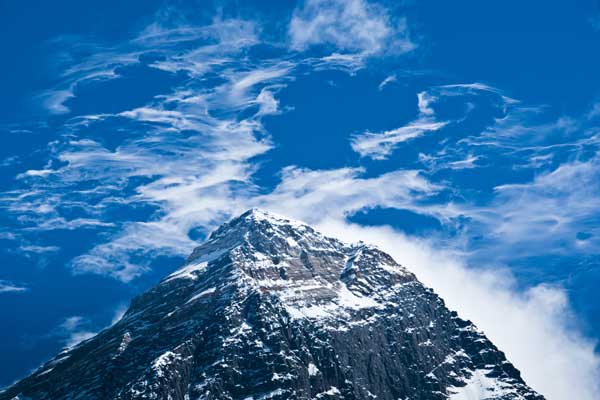
The prime attraction in the Sagarmatha National park is Mount Everest., the highest peak of the world. The park was added to the list of World Heritage Site in 1979 by UNESCO. The park, a part of the Himalayan ecological zone, has several other prominent peaks most of which are above 6000 meters. With most of the peaks above 3000 meters, Sagarmatha is full of rugged terrain with deep gorges, glaciers and huge rocks. With its Himalayan terrain and its unique culture, the peak offers a blend of natural and cultural tourist products here. The vegetation at lower elevation is dominated by pine and hemlock forests, while above 3500 meters the forest is dominated with silver fir, birch, rhododendron, and juniper trees. During spring and monsoon the varieties of rhododendron flowers are seen. Then common wildlife in the park is Himalayan tahr, ghoral, musk deer, pikka (mouse hare), weasel and jackal. Other rarely seen animal are Himalayan black bear, wolf, lynx and snow leopard. Birds inhabiting the park are over 193 species. Common ones among them are the impeyan pheasant (Dhanfe), blood pheasant, red-billed chough, yellow-billed chough, snow cock, snow pigeon, Himalayan griffon, and lammergeyer. The national park also showcases the cultural trophies with the warm Sherpa hospitality and its many monasteries and cultural landmarks.
Every year thousands of trekkers visit this national park to see the Himalayan scenery, mountains and the Mount Everest. Sagarmatha National Park can be reached by 35-minutes’ flight to Lukla from Kathmandu. There are several good loges/tea houses available almost all routes in Everest region. March to May and October to November is the best time to travel in this park. Everest Base Camp Trek, Everest High Passes Trek and Everest Panorama Trek are some popular trekking trips in Sagarmatha National Park. Also many adventure lovers climb Mount Everest, Mount Lhotse, Mount Amadablam, Lobuche Peak, Island Peak, Mera Peak and other peaks.